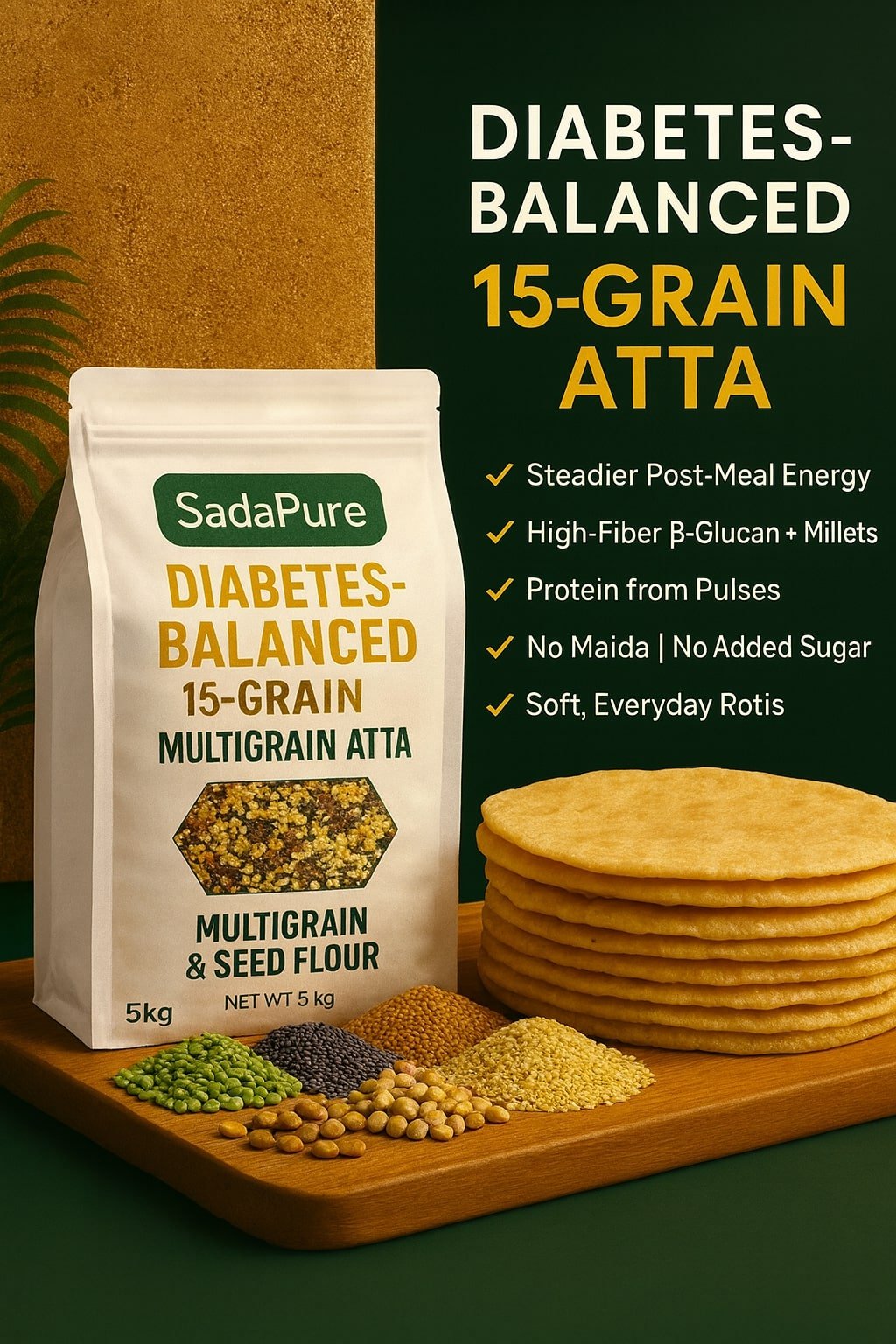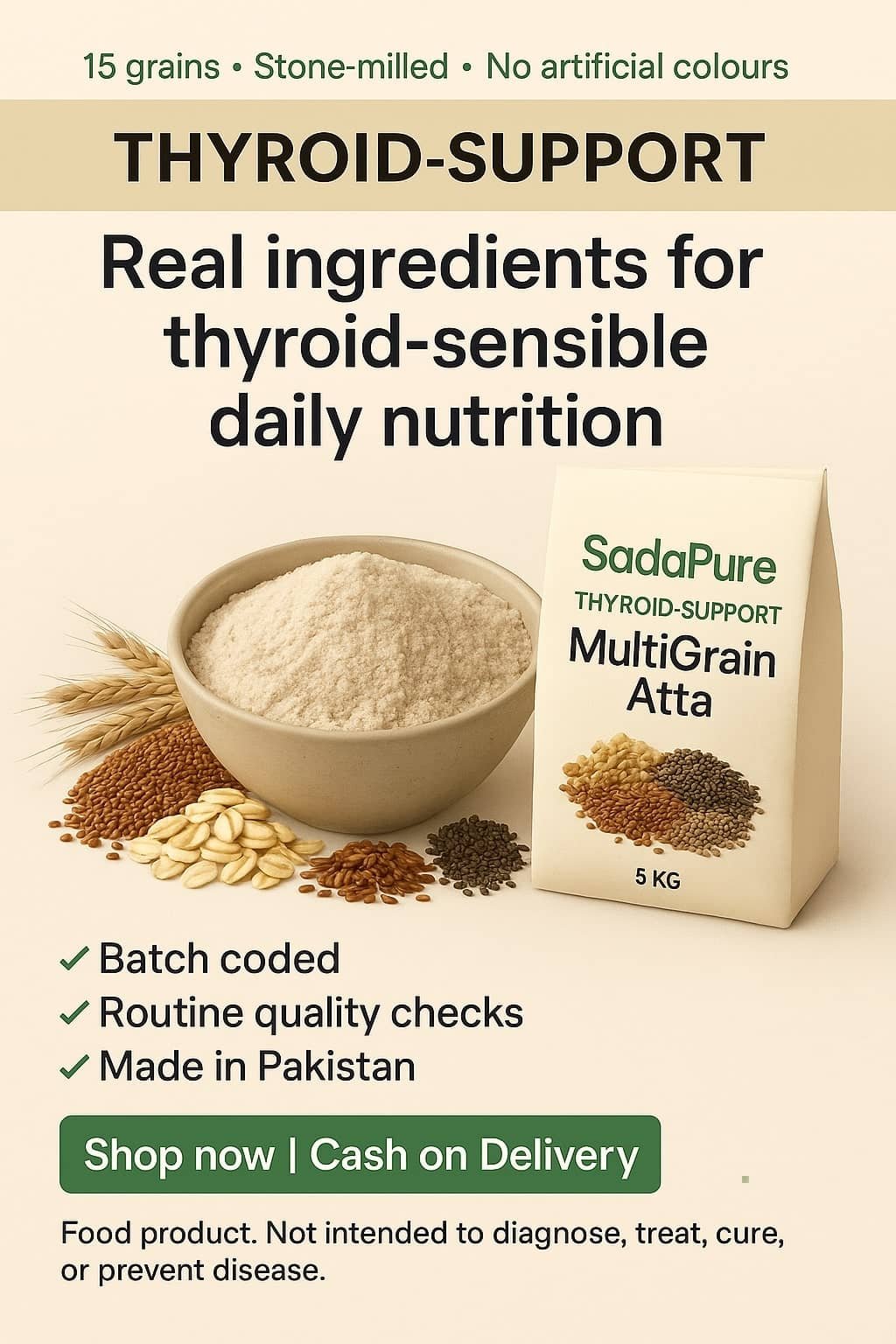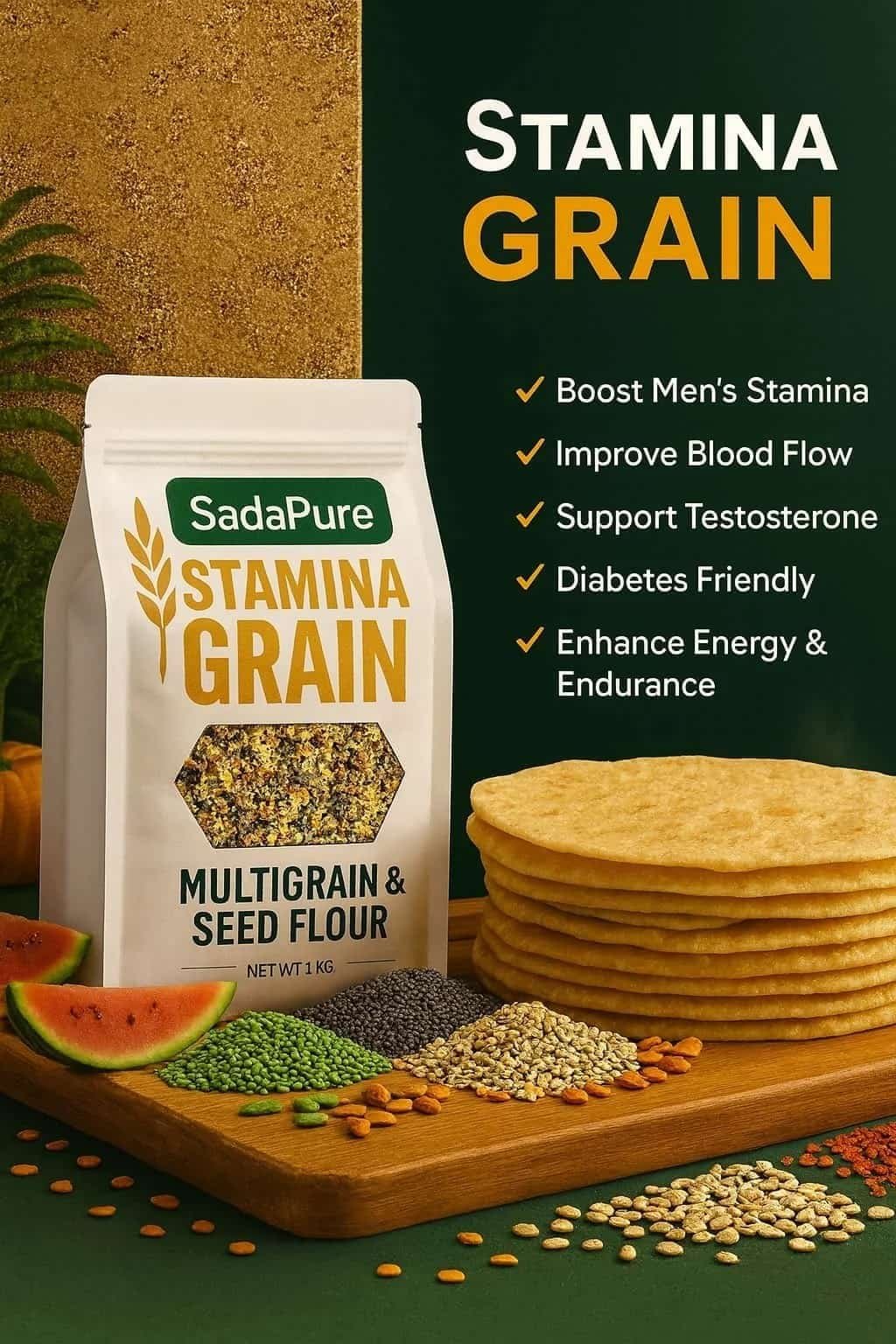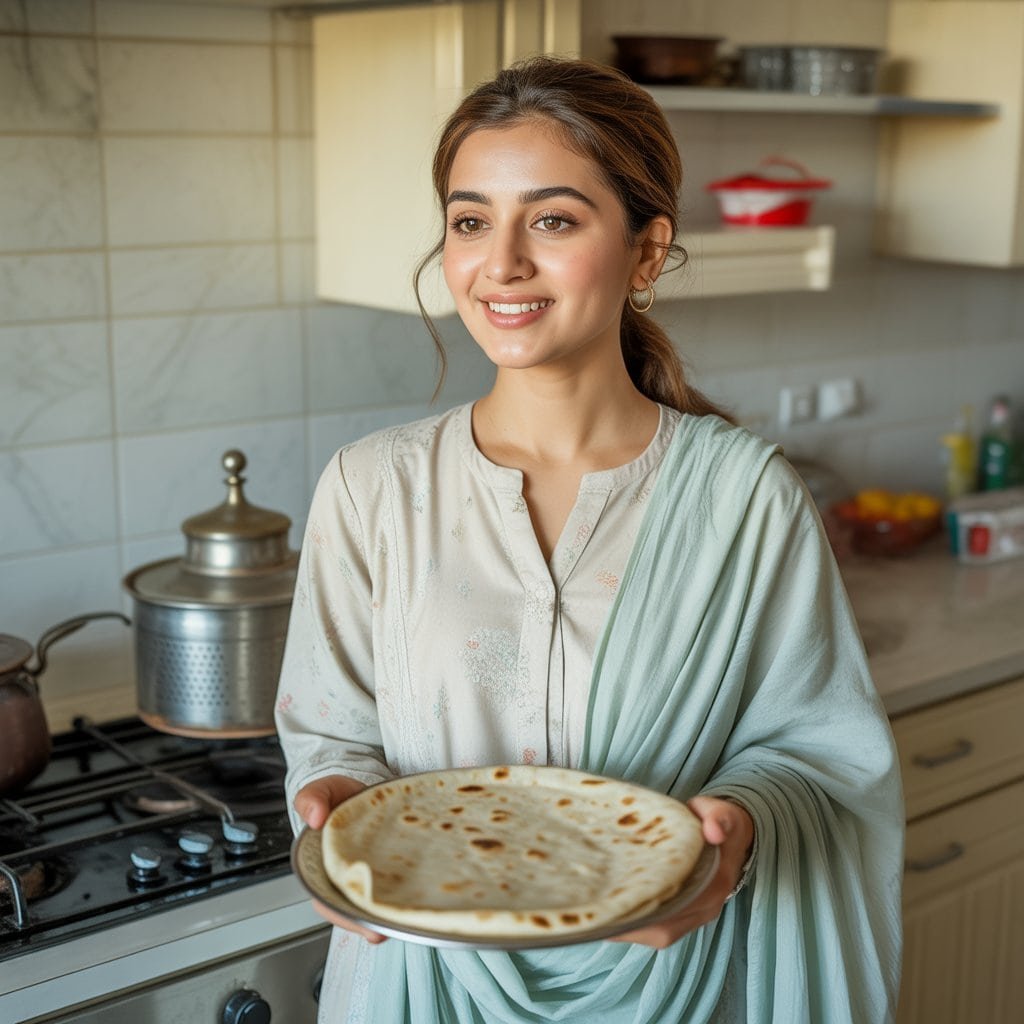SadaPure Foods (Taste the Pure Grain) – Every organic bite makes you stronger
SadaPure multigrain flour supports blood sugar control, PCOS & hormonal balance, men’s stamina, heart health, and digestive comfort. Made from whole grains, legumes, and seeds for steady energy with fiber and plant protein suited to daily rotis, breads, and bowls. Choose what fits your needs: Diabetes Care, PCOS & Women’s Wellness, Men’s Stamina & Vitality, Heart-Healthy Mix, Digestive Wellness. Simple ingredients, consistent cooking results, and a taste your family will enjoy.
What’s Inside the Bag
SadaPure formulates multigrain flours using a specific combination of whole grains, pulses, and seeds, including whole wheat, barley, oats, sorghum, chickpea, pumpkin seed, and watermelon seed, chosen for their complimentary starch profiles, soluble/insoluble fibre, and plant protein. Each blend is milled to a constant granulation for consistent dough hydration and shape, ensuring that rotis remain soft, parathas puff evenly, and flatbreads maintain structure without being overly dense. The ingredient lists are brief and transparent—only the listed grains and seeds—so buyers know exactly what is in the bag. The line tackles real-world kitchen demands, including a steady-carb blend for diabetes-friendly meal planning, higher-fiber alternatives matched with PCOS-friendly eating habits, and stamina-boosting mixes for long workdays. The end result is predictable cooking performance, a familiar taste, and nutrients appropriate for ordinary family dinners.
Shop Featured Products

Diabetes Multigrain Atta (Balanced Flour for Sugar Patient ) – 5 kg

Multigrain Flour (Atta) for Thyroid Patients – (5 KG) Bag – 15-Grain & Seed Blend

Hair Fall Rescue & Skin (biotin/fiber rich, beauty-support) MultiGrain Atta (Flour)

PCOS Support Multigrain Atta – 100% Organic, Hormonal Balanced Flour, 5kg Bag

SadaPure Men’s Stamina Booster Multigrain Atta (Flour) 5KG – مردانہ طاقت کا راز
Pick Your Daily Mix
Multigrain for Diabetes balanced
A steady-carb option made with grains and pulses that digest slowly. Supports balanced eating patterns and works well for daily rotis and breads where you want a softer bite with good chew.
Frequently Asked Questions
1) What is multigrain flour?
Flour made by milling two or more whole grains together. People also call it “multigrain atta” or “whole-grain chapati flour.” Compared with refined flour, it’s higher in fibre and plant protein and usually has a steadier glycaemic impact. For everyday cooking, choose a clean-label, stone-ground blend like SadaPure Multigrain Atta for better taste and nutrition.
2) What are the 5 grains commonly used in multigrain flour?
Typical mixes use whole-wheat, oats, barley, jowar (sorghum), and bajra (pearl millet). This combo adds soluble fibre, B-vitamins, iron, and slow-release energy. Always check labels for transparent grain percentages—SadaPure lists ingredients clearly.
3) Is multigrain atta good for diabetics?
Whole-grain blends with oats or barley (beta-glucan) can support steadier post-meal glucose. Portion control and balanced meals still matter. Aim near or above 10 g fibre per 100 g flour—SadaPure Multigrain Atta is formulated with high-fibre whole grains.
4) What counts as multigrain atta?
Any flour that combines multiple grains (preferably whole). Prioritise blends where whole grains appear first and refined fillers are absent. Confirm grain ratios and fibre per 100 g for a true whole-grain product.
5) What are the disadvantages of multigrain atta?
Some “multigrain” flours include refined flours that lower fibre. High non-wheat ratios can reduce gluten, affecting roti softness. New users may feel bloating with sudden fibre increases—adjust gradually and hydrate well.
6) What is the best combination for soft rotis?
Practical template: ~60% whole-wheat for structure, 20–30% oats/barley for soluble fibre, and 5–10% millets/legumes/seeds. This balances softness, nutrition, and energy release. It’s the approach SadaPure follows to keep rotis soft and flavourful.
7) Can we eat multigrain roti daily?
Yes—if the flour is truly whole-grain and portions fit your needs. Rotate grains for micronutrient diversity and pair with vegetables, pulses, and lean proteins. SadaPure Multigrain Atta is ideal for everyday rotis.
8) Which is better: wheat or multigrain?
Whole-wheat gives familiar softness and taste, while multigrain offers broader nutrients and higher satiety. For weight and heart health, whole-grain multigrain often has an edge. If you want extra-soft rotis with better nutrition, choose SadaPure Multigrain Atta.
9) Which multigrain atta is best for cholesterol?
Pick blends with oats and barley for beta-glucan soluble fibre that supports LDL reduction; flaxseed adds omega-3s. Aim for higher fibre per 100 g with minimal additives. SadaPure Multigrain Atta focuses on high-fibre whole grains and a clean label.
10) How can I make multigrain flour at home?
Clean, sun-dry, and mill whole grains like wheat, oats, jowar, bajra, and ragi; lightly roast if preferred. Blend to your ratio, sieve to texture, and store airtight. Prefer small batches—or use ready-to-cook SadaPure Multigrain Atta for consistency and convenience.
11) Is multigrain atta suitable for kidney patients?
It depends on CKD stage and labs; some whole grains are higher in potassium and phosphorus. Discuss portions and grain choices with a renal dietitian before changing staples.
12) Which brand of multigrain atta is best?
Look for whole-grain first ingredients, clear grain percentages, high fibre (about ≥10 g/100 g), chakki-ground freshness, airtight packaging, and independent quality checks. SadaPure Multigrain Atta is built around these standards and consistently delivers soft, evenly puffed rotis.

